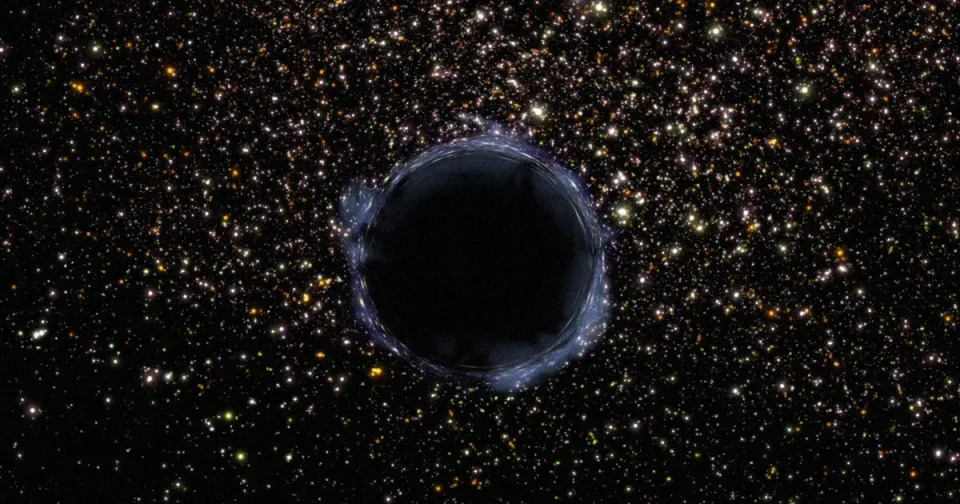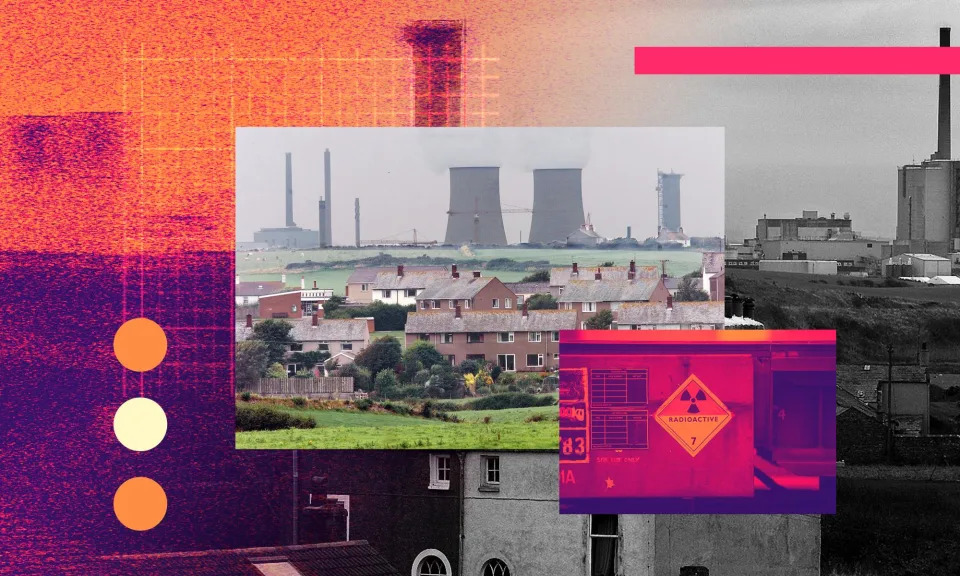Jonathan Bridge, Reader / Associate Professor in Environmental Geoscience, Sheffield Hallam University
Tue, 5 December 2023
The Conversation

RoProy/Shutterstock
On the morning of December 6 1917, a French cargo ship called SS Mont-Blanc collided with a Norwegian vessel in the harbour of Halifax in Nova Scotia, Canada. The SS Mont-Blanc, which was laden with 3,000 tons of high explosives destined for the battlefields of the first world war, caught fire and exploded.
The resulting blast released an amount of energy equivalent to roughly 2.9 kilotons of TNT, destroying a large part of the city. Although it was far from the front lines, this explosion left a lasting imprint on Halifax in a way that many regions experience environmental change as a result of war.
The attention of the media is often drawn to the destructive explosions caused by bombs, drones or missiles. And the devastation we have witnessed in cities like Aleppo, Mosul, Mariupol and now Gaza certainly serve as stark reminders of the horrific impacts of military action.
However, research is increasingly uncovering broader and longer-term consequences of war that extend well beyond the battlefield. Armed conflicts leave a lasting trail of environmental damage, posing challenges for restoration after the hostilities have eased.
Research interest in the environmental impacts of war

A figure showing the rising trend of publications on military-caused soil pollution since the 1990s.
Toxic legacies
Battles and even wars are over relatively quickly, at least compared to the timescales over which environments change. But soils and sediments record their effects over decades and centuries.
In 2022, a study of soil chemistry in northern France showed elevated levels of copper and lead (both toxic at concentrations above trace levels), and other changes in soil structure and composition, more than 100 years after the site was part of the Battle of the Somme.
Research on more recent conflicts has recorded the toxic legacy of intense fighting too. A study that was carried out in 2016, three decades after the Iran-Iraq war, found concentrations of toxic elements like chromium, lead and the semi-metal antimony in soils from the battlefields. These concentrations were more than ten times those found in soils behind the front lines.
The deliberate destruction of infrastructure during war can also have enduring consequences. One notable example is the first Gulf War in 1991 when Iraqi forces blew up more than 700 oil wells in Kuwait. Crude oil spewed into the surrounding environment, while fallout from dispersing smoke plumes created a thick deposit known as “tarcrete” over 1,000 sq km of Kuwait’s deserts.
The impact of the oil fires on the air, soil, water and habitats captured global attention. Now, in the 21st century, wars are closely scrutinised in near real-time for environmental harm, as well as the harm inflicted on humans.
Conflict is a systemic catastrophe
One outcome of this scrutiny is the realisation that conflict is a catastrophe that affects entire human and ecological systems. Destruction of social and economic infrastructure like water and sanitation, industrial systems, agricultural supply chains and data networks can lead to subtle but devastating indirect environmental impacts.
Since 2011, conflict has marred the north-western regions of Syria. As part of a research project that was led by my Syrian colleagues at Sham University, we conducted soil surveys in the affected areas.
Our findings revealed widespread diffuse soil pollution in agricultural land. This land feeds a population of around 3 million people already experiencing severe food insecurity.
The pollution probably stems from a combination of factors, all arising as a consequence of the regional economic collapse that was caused by the conflict. A lack of fuel to pump wells, combined with destruction of wastewater treatment infrastructure, has led to an increased reliance on streams contaminated by untreated wastewater for irrigating croplands.
Contamination could also stem from the use of low-grade fertilisers, unregulated industrial emissions and the proliferation of makeshift oil refineries.
More recently, the current conflict in Ukraine, which prompted international sanctions on Russian grain and fertiliser exports, has disrupted agricultural economies worldwide. This has affected countries including the Democratic Republic of Congo, Egypt, Nigeria and Iran particularly hard.
Many small farmers in these countries may have been forced into selling their livestock and abandoning their land as they struggle to buy the materials they need to feed their animals or grow crops. Land abandonment is an ecologically harmful practice as it can take decades for the vegetation densities and species richness typical of undisturbed ecosystems to recover.
Warfare can clearly become a complicated and entangled “nexus” problem, the impacts of which are felt far from the war-affected regions.

A field of rapeseed flowers in Ukraine.

RoProy/Shutterstock
On the morning of December 6 1917, a French cargo ship called SS Mont-Blanc collided with a Norwegian vessel in the harbour of Halifax in Nova Scotia, Canada. The SS Mont-Blanc, which was laden with 3,000 tons of high explosives destined for the battlefields of the first world war, caught fire and exploded.
The resulting blast released an amount of energy equivalent to roughly 2.9 kilotons of TNT, destroying a large part of the city. Although it was far from the front lines, this explosion left a lasting imprint on Halifax in a way that many regions experience environmental change as a result of war.
The attention of the media is often drawn to the destructive explosions caused by bombs, drones or missiles. And the devastation we have witnessed in cities like Aleppo, Mosul, Mariupol and now Gaza certainly serve as stark reminders of the horrific impacts of military action.
However, research is increasingly uncovering broader and longer-term consequences of war that extend well beyond the battlefield. Armed conflicts leave a lasting trail of environmental damage, posing challenges for restoration after the hostilities have eased.
Research interest in the environmental impacts of war

A figure showing the rising trend of publications on military-caused soil pollution since the 1990s.
Toxic legacies
Battles and even wars are over relatively quickly, at least compared to the timescales over which environments change. But soils and sediments record their effects over decades and centuries.
In 2022, a study of soil chemistry in northern France showed elevated levels of copper and lead (both toxic at concentrations above trace levels), and other changes in soil structure and composition, more than 100 years after the site was part of the Battle of the Somme.
Research on more recent conflicts has recorded the toxic legacy of intense fighting too. A study that was carried out in 2016, three decades after the Iran-Iraq war, found concentrations of toxic elements like chromium, lead and the semi-metal antimony in soils from the battlefields. These concentrations were more than ten times those found in soils behind the front lines.
The deliberate destruction of infrastructure during war can also have enduring consequences. One notable example is the first Gulf War in 1991 when Iraqi forces blew up more than 700 oil wells in Kuwait. Crude oil spewed into the surrounding environment, while fallout from dispersing smoke plumes created a thick deposit known as “tarcrete” over 1,000 sq km of Kuwait’s deserts.
The impact of the oil fires on the air, soil, water and habitats captured global attention. Now, in the 21st century, wars are closely scrutinised in near real-time for environmental harm, as well as the harm inflicted on humans.
Conflict is a systemic catastrophe
One outcome of this scrutiny is the realisation that conflict is a catastrophe that affects entire human and ecological systems. Destruction of social and economic infrastructure like water and sanitation, industrial systems, agricultural supply chains and data networks can lead to subtle but devastating indirect environmental impacts.
Since 2011, conflict has marred the north-western regions of Syria. As part of a research project that was led by my Syrian colleagues at Sham University, we conducted soil surveys in the affected areas.
Our findings revealed widespread diffuse soil pollution in agricultural land. This land feeds a population of around 3 million people already experiencing severe food insecurity.
The pollution probably stems from a combination of factors, all arising as a consequence of the regional economic collapse that was caused by the conflict. A lack of fuel to pump wells, combined with destruction of wastewater treatment infrastructure, has led to an increased reliance on streams contaminated by untreated wastewater for irrigating croplands.
Contamination could also stem from the use of low-grade fertilisers, unregulated industrial emissions and the proliferation of makeshift oil refineries.
More recently, the current conflict in Ukraine, which prompted international sanctions on Russian grain and fertiliser exports, has disrupted agricultural economies worldwide. This has affected countries including the Democratic Republic of Congo, Egypt, Nigeria and Iran particularly hard.
Many small farmers in these countries may have been forced into selling their livestock and abandoning their land as they struggle to buy the materials they need to feed their animals or grow crops. Land abandonment is an ecologically harmful practice as it can take decades for the vegetation densities and species richness typical of undisturbed ecosystems to recover.
Warfare can clearly become a complicated and entangled “nexus” problem, the impacts of which are felt far from the war-affected regions.

A field of rapeseed flowers in Ukraine.
Delpixel/Shutterstock
Conflict, cascades and climate
Recognising the complex, cascading environmental consequences of war is the first step towards addressing them. Following the first Gulf War, the UN set up a compensation commission and included the environment as one of six compensable harms inflicted on countries and their people.
Jordan was awarded more than US$160 million (£127 million) over a decade to restore the rangelands of its Badia desert. These rangelands had been ecologically ruined by a million refugees and their livestock from Kuwait and Iraq. The Badia is now a case study in sustainable watershed management in arid regions.
In the north-west region of Syria, work is underway to assess farmers’ understanding of soil contamination in areas that have been affected by conflict. This marks the first step in designing farming techniques aimed at minimising threats to human health and restoring the environment.
Armed conflict has also finally made it onto the climate agenda. The UN’s latest climate summit, COP28, includes the first themed day dedicated to “relief, recovery and peace”. The discussion will focus on countries and communities in which the ability to withstand climate change is being hindered by economic or political fragility and conflict.
And as COP28 got underway, the Conflict and Environment Observatory, a UK charity that monitors the environmental consequences of armed conflicts, called for research to account for carbon emissions in regions affected by conflict.
The carbon impact of war is still not counted in the global stocktake of carbon emissions – an essential reference for climate action. But far from the sound and fury of the explosions, warfare’s environmental impacts are persistent, pervasive and equally deadly.
This article is republished from The Conversation under a Creative Commons license. Read the original article.

Jon Bridge works voluntarily with the Council for At-Risk Academics (Cara) to support their Syria Programme, which funded some of the work described in this article.
Recognising the complex, cascading environmental consequences of war is the first step towards addressing them. Following the first Gulf War, the UN set up a compensation commission and included the environment as one of six compensable harms inflicted on countries and their people.
Jordan was awarded more than US$160 million (£127 million) over a decade to restore the rangelands of its Badia desert. These rangelands had been ecologically ruined by a million refugees and their livestock from Kuwait and Iraq. The Badia is now a case study in sustainable watershed management in arid regions.
In the north-west region of Syria, work is underway to assess farmers’ understanding of soil contamination in areas that have been affected by conflict. This marks the first step in designing farming techniques aimed at minimising threats to human health and restoring the environment.
Armed conflict has also finally made it onto the climate agenda. The UN’s latest climate summit, COP28, includes the first themed day dedicated to “relief, recovery and peace”. The discussion will focus on countries and communities in which the ability to withstand climate change is being hindered by economic or political fragility and conflict.
And as COP28 got underway, the Conflict and Environment Observatory, a UK charity that monitors the environmental consequences of armed conflicts, called for research to account for carbon emissions in regions affected by conflict.
The carbon impact of war is still not counted in the global stocktake of carbon emissions – an essential reference for climate action. But far from the sound and fury of the explosions, warfare’s environmental impacts are persistent, pervasive and equally deadly.
This article is republished from The Conversation under a Creative Commons license. Read the original article.

Jon Bridge works voluntarily with the Council for At-Risk Academics (Cara) to support their Syria Programme, which funded some of the work described in this article.













